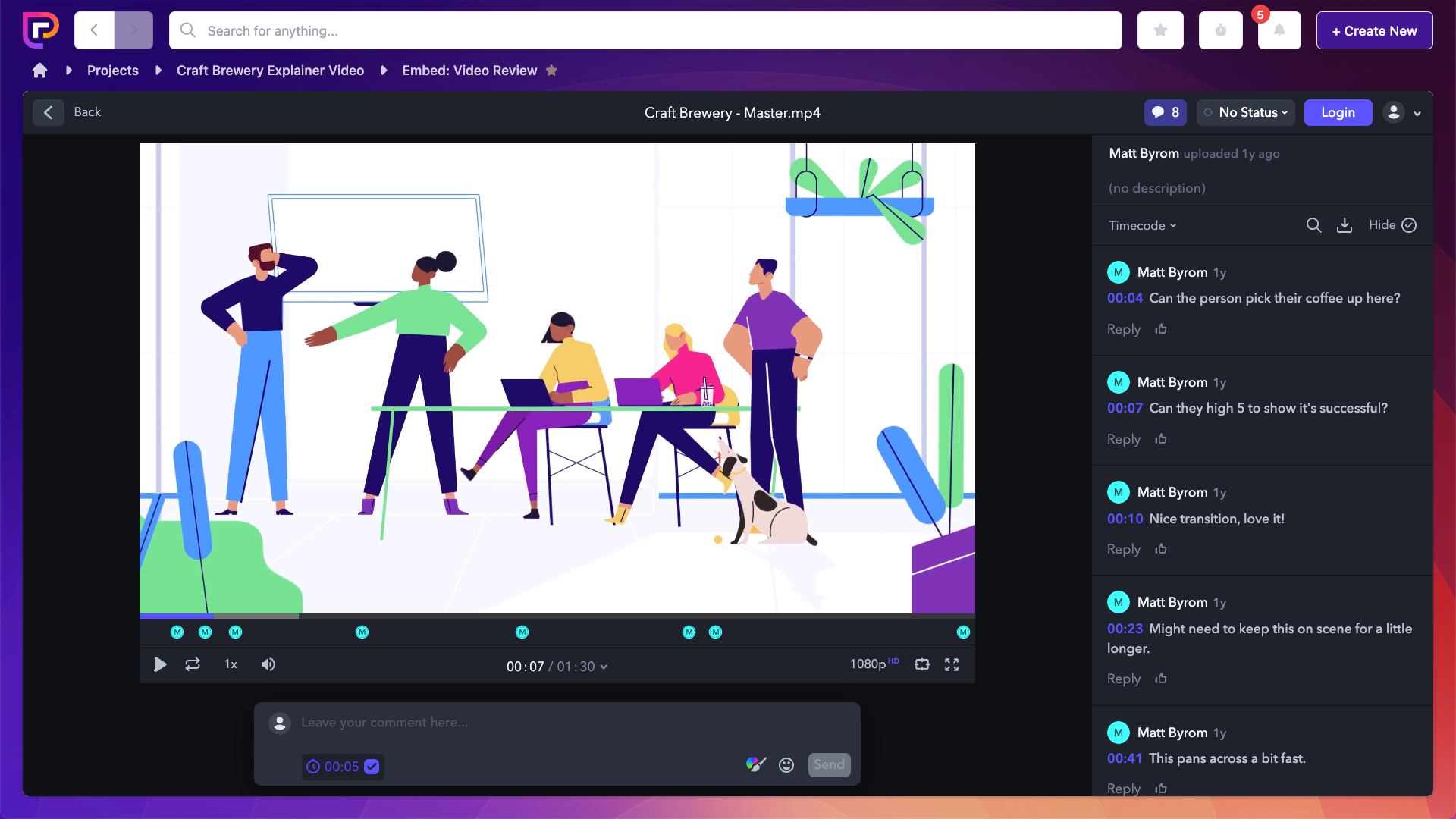Last updated on 31st May 2024
In this article, we’re going to shine a spotlight on team collaboration. We’ll find out exactly what team collaboration means, why it’s important to have a collaborative team, and explore 7 strategies that you can use to benefit from more successful team collaboration.
What is team collaboration?
Team collaboration is when colleagues work together towards a common goal. These colleagues could all be on the same team or there could be some cross-team collaboration going on, but the main thing is that everyone brings their own unique skills, knowledge and perspectives to the table.
Team collaboration is great for problem-solving, boosting productivity, generating innovative ideas, and also for creating a sense of belonging within the team. When your team can collaborate successfully together you open yourself up to many benefits, from more engaged employees, to increased customer satisfaction, and more project success.
7 Strategies For Successful Team Collaboration
1. A shared goal
The very first thing you need to build a collaborative team is a shared goal. Something they can actually collaborate on!
This one may sound super obvious but it is important to set a clear objective and also make sure everyone understands what their role will be in achieving that objective.
It’s human nature that everyone will have their own opinions on how to reach this shared goal, but it’s the team leader’s job to ensure that everyone works together and heads in the same direction to accomplish this goal successfully.
2. Clear communication channels
Clear communication is paramount for successful team collaboration. Team members need to communicate with each other regularly so that they’re informed on the status of the project and understand what the next steps are.
Regardless of whether you have an in-person, remote, or hybrid team, establishing clear communication channels is one of the best ways to ensure there are no miscommunications or crossed wires.
It’s easy to do this by utilising tools, like project management software. Project management software allows you to keep all communications in one place so team members always know where they need to go to get answers.
Project management software, like Project.co, can help you streamline communication and ensure everyone remains informed about the project.

Our Discussions tool works just like any messaging platform. You can tag people, upload files, use emojis. And the best part? Every single communication is date and time-stamped in one centralised place. If you encourage your team to use only one communication tool like this, then you can avoid information silos and ensure that no one ever misses or loses a message again!
3. Defined roles and responsibilities
For a team to work together successfully, everyone on that team needs to know exactly what their roles and responsibilities are. This avoids any confusion over ownership of tasks and makes sure that no tasks are missed and equally that no tasks are duplicated.
Having a project management tool that outlines everyone’s tasks can be a great help here:

This is the perfect way for each team member to check on their tasks and remain accountable for their part of the project, and it’s also great for the team leader or project manager to be able to see everyone’s tasks at a glance and make sure things are moving in the right direction.
4. Regular check ins
We know, we know, no one likes meetings! But when it comes to team collaboration, things just aren’t going to work if you don’t talk to each other. This is especially important for remote teams but still useful for in-person teams too.
These meetings don’t have to take up lots of time. We already know the majority of people feel like they waste time in meetings.
A simple 10 minute check in once a day or once a week – it all depends on the nature of your project – will be more than enough time for everyone to touch base and ask any questions they might have. It also gives members of the team the opportunity to share any issues or struggles they are having, and gives others the chance to step in and help. After all, isn’t that what team collaboration is all about!
5. Utilise collaborative tools and tech
If you want to be the best collaborative team out there then there are plenty of tools you can use to your advantage. A lot of project management softwares have tools to help you streamline your workflow and manage your tasks, and some even facilitate real-time collaboration.

The Project.co embeds tool allows you to embed almost any piece of work that you’re collaborating on right into your project. This allows your team to collaborate on the work in real-time, so they can see and respond to each other’s comments and you can be certain that you’re all working from the same version.
6. Conflict management
Conflict is no one’s favourite topic but it’s something you need to consider when thinking about team collaboration. Whenever people are working closely together on something, conflicts are likely to arise. This is because everyone’s different and personalities and opinions can often clash.
Although conflict isn’t always the case, it’s inevitable for many teams. The best way to deal with it is to prepare yourself. Look up conflict management strategies and make notes on how you would manage conflicts if they were to arise in your team.
7. Encourage openness and feedback
In order for your team to collaborate together successfully, they need to feel comfortable in sharing their thoughts, opinions, ideas, concerns, and feedback.
It’s important to foster an environment that encourages openness and feedback. Encourage constructive criticism, share successes and failures with your team, and let them know there’s no such thing as a stupid question! When people feel safe enough to speak openly, teams can work together more successfully.
Final thoughts
Overall, more collaborative teams leads to better employee engagement, productivity and satisfaction. A collaborative environment can help facilitate better work, more innovative solutions – and, ultimately, more successful projects!
For more on this topic, check out: How to develop successful cross functional teams





